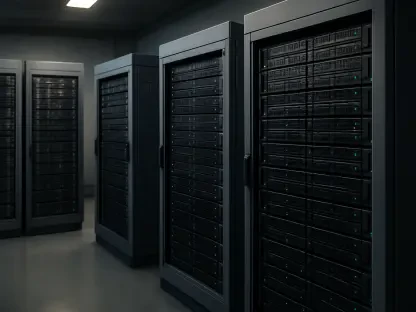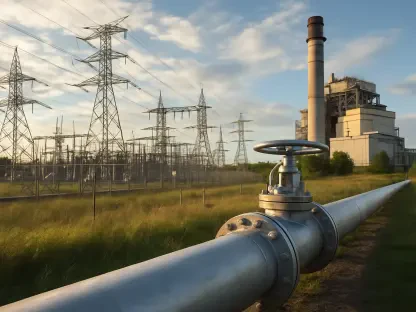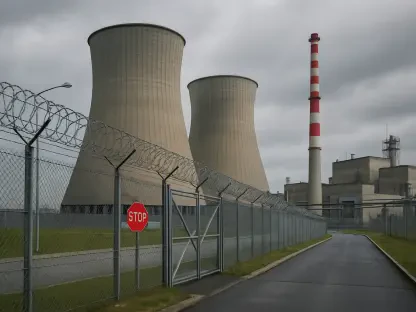In 2024, the energy sector faced unprecedented challenges due to severe weather-induced outages. These events highlighted an urgent need for robust disaster avoidance strategies, especially as we increasingly rely on digital IT infrastructure to oversee plant operations. The major outage events of this year serve as stark reminders of the vital importance of preparedness and the strategies necessary to mitigate unforeseen disruptions. With extreme weather events growing in frequency and severity, maintaining continual uptime for power generation facilities has become more crucial than ever. By examining power outages from massive weather events in 2024, the energy industry can glean valuable insights into enhancing disaster preparedness for the future.
The Impact of Severe Weather on Power Generation Facilities
The year 2024 was marked by several significant weather events that led to widespread power outages across various regions. In January, a formidable winter storm battered the Northeast, leading to extensive coastal flooding and damaging winds that resulted in nearly a million power outages. The storm did not spare the central U.S., where it caused blizzards, nor the Southeast, which experienced severe thunderstorms and tornadoes. The widespread impact of this storm underscored the vulnerability of energy infrastructure to severe winter weather conditions.
In February, California endured its own set of intense winter storms characterized by heavy rain and strong winds, leading to power outages for over 850,000 residents. Beyond the electric grid, the state faced life-threatening floods, mudslides, and landslides, which compounded the complexity of recovery efforts. The dual threat of adverse weather effects on both power facilities and the broader community emphasized a need for more comprehensive disaster preparedness strategies. These events illustrated how regional climate dynamics could significantly disrupt both human life and technological operations.
Hurricane Beryl struck Texas in July, leaving in its wake more than a million homes and businesses without power. The hurricane claimed lives, caused extensive flight disruptions, and continued its destructive path across the U.S. In a similar vein, Hurricane Ernesto affected Puerto Rico, with its outer bands knocking out power for over 700,000 people, despite not directly hitting the island. These hurricanes exemplify how widespread their impacts can be, emphasizing the importance of extending preparedness measures beyond immediate landfall areas.
Lessons Learned from Major Outage Events
The major outage events of 2024 underscore the increasingly unpredictable and severe nature of weather-related disruptions affecting power generation facilities. These events have collectively highlighted the critical need for proactive measures to protect both power generation and IT infrastructure against natural calamities. One essential lesson from these experiences is the importance of integrating reliable backup power solutions to ensure operational continuity during outages.
Uninterruptible power supplies (UPSs) equipped with advanced lithium-ion battery technology have emerged as vital components in these systems. Lithium-ion batteries offer extended battery life and higher service efficiency, while also reducing the physical footprint of backup power solutions. This combination facilitates enhanced protection during power outages, ensuring that critical IT infrastructure continues to function. These reliable backup systems represent a crucial pillar in maintaining operational stability in the face of extreme weather events.
Another key takeaway is the necessity for digital innovations to manage these increasingly complex and dynamic situations better. Deploying network management cards and cloud-connected UPS systems enables real-time monitoring and control of power devices, regardless of their location. This capability allows for the immediate identification and resolution of potential issues, even if they arise in remote or hard-to-reach facilities. Utilizing these digital tools for remote management simplifies the ongoing monitoring process, thereby mitigating risks before they escalate into significant problems.
Enhancing IT System Resiliency
To bolster IT system resiliency, it becomes crucial to employ an array of sophisticated tools and software solutions. Implementing data center performance management software (DCPM), distributed IT performance management software, and electrical power monitoring system software can provide comprehensive oversight of power assets across expansive networks. These software tools are essential not only in ensuring the efficient functioning of power systems but also in guaranteeing timely updates and countering cyber threats. The importance of these digital solutions cannot be overstated; they form the backbone of a resilient IT infrastructure, capable of withstanding and quickly recovering from severe weather-induced disruptions.
Moreover, reliable hardware components such as surge protection devices, power strips, and rack/cabinet PDUs (power distribution units) play a fundamental role in safeguarding critical IT infrastructure. These components can prevent unexpected downtimes by protecting against power surges and distribution failures. Ensuring that these hardware elements are dependable and properly maintained is vital to maintaining operational continuity during severe weather events. Their role in the broader context of disaster preparedness highlights the importance of a well-rounded approach that incorporates both digital and physical protections.
Proactive Measures for Disaster Preparedness
In 2024, the energy sector faced tremendous challenges due to severe weather-induced outages, underscoring the critical need for strong disaster preparedness strategies. As the reliance on digital IT infrastructure for managing plant operations intensifies, these outage events highlight the pressing necessity for measures to prevent disruptions. The significant outages this year starkly remind us of the essential importance of readiness and the strategies vital for mitigating unexpected interruptions. The increasing frequency and severity of extreme weather events have made it more crucial than ever to ensure uninterrupted operation of power generation facilities. Learning from the large-scale weather-related power outages in 2024, the energy industry can gain valuable insights into improving disaster preparedness going forward. By bolstering these strategies and focusing on resilience, the sector can better handle future extreme weather events, enhancing overall reliability and stability for the long term.









